Strength Training Older Adults: Often associated with youthful athletes lifting heavy weights, strength training holds equal importance for older adults seeking to maintain their health and independence. With age, muscle mass naturally diminishes, a condition known as sarcopenia.
Regular strength training can counteract this effect by promoting muscle growth, enhancing bone density, and improving overall physical ability. For seniors, this translates into a decreased risk of falls, better joint health, and the ability to efficiently perform daily activitiesto perform daily activities easily.
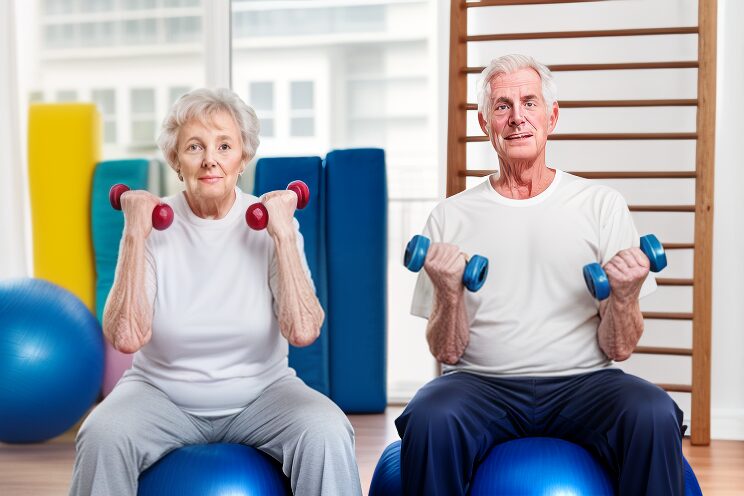
Strength Training Older Adults: Effective Strength Training for Seniors
Understanding the suitable types of exercises and how to perform them safely is paramount for older adults. While high-intensity workouts might not be suitableVarioussignificantly, numerous strength training exercises are tailored to meet the senior population’s needs. These workouts build core stability, strengthen major muscle groups, and improve balance and flexibility.]
Using various techniques such as resistance training with equipment like dumbbells or resistance bands, and bodyweight exercises, can consistent, yet adaptable routine benefit seniors looking to maintain and improve their strength. It’s also crucial to develop a routine that is consistent, yet adaptable to your changing fitness levels, and to stay motivated throughout this fitness journey.
Key Takeaways
- Strength training helps counter muscle loss and increases independence in older adults.
- Tailored exercises focusing on core, upper, and lower body strength are vital.
- Consistency and motivation are crucial to maintaining a strength training routine.
Understanding the Importance of Strength Training for Older Adults
As you age, your muscle mass naturally decreases, a condition known as sarcopenia. Strength training is vital in combating this loss, helping you maintain muscle mass and bone density. Regular strength exercises can boost your stamina, enhance your mobility, and improve balance, reducing your risk of falls.
Incorporating resistance training into your routine can lead to significant health benefits, such as:
- Improved Metabolic Health: By increasing muscle mass, you’re not only enhancing your body’s capability to regulate blood sugar levels but also increasing its metabolic rate, which can help in weight management.
- Maintenanreleasesisce of Bone Health: Activities that place stress on bones can encourage bone growth and strength, potentially staving off osteoporosis.
- Enhanced Mental Well-being: Exercise, including strength training, is known to release endorphins that can improve mood and reduce feelings of depression.
Furthermore, these benefits are not limited to those in perfect health; strength training essentia beneficial for those living with chronic conditions such as heart disease, diabetes, and arthritis.
By integrating weight-bearing and resistance exercises into your weekly routine, you take a proactive step toward extending your active years and improving your overall quality of life. Remember, it’s important to consult with a healthcare provider before starting any new exercise program, especially if you have pre-existing health conditions.
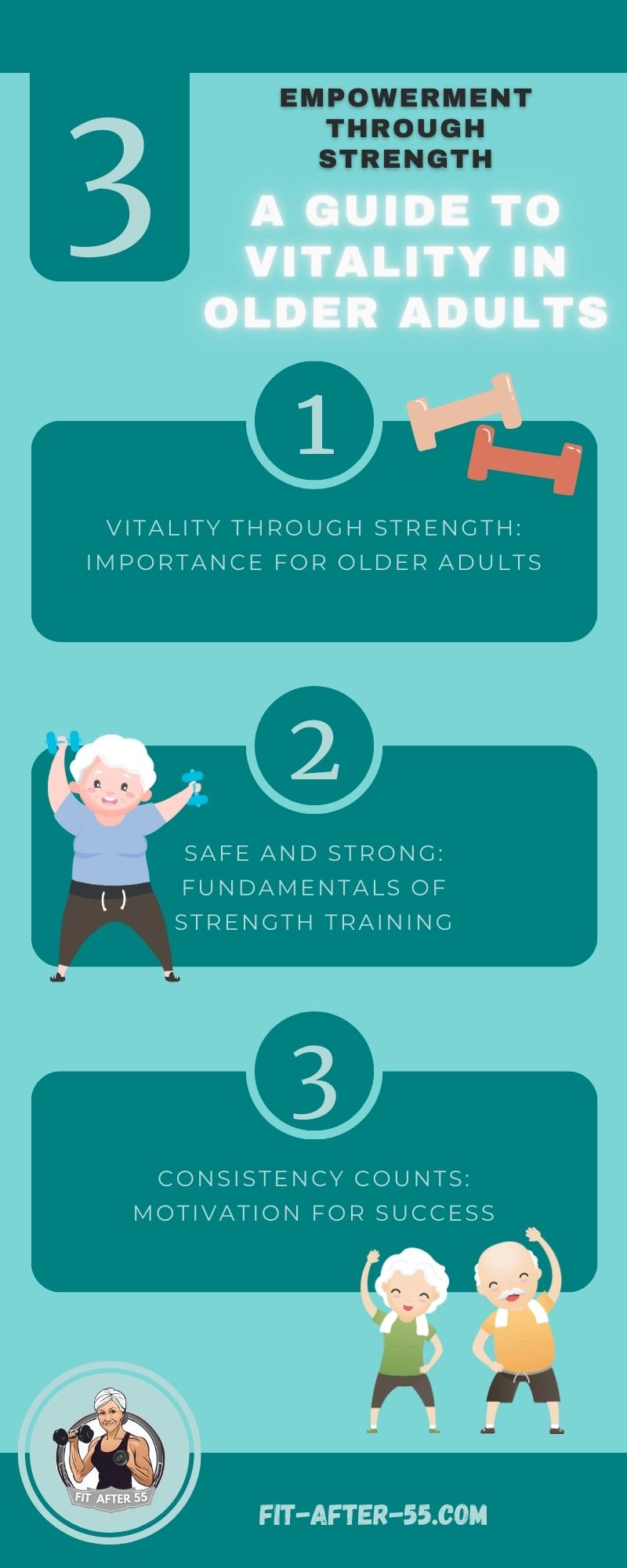
Fundamentals of Safe Strength Training

When engaging in strength training, keeping safety in mind maximizes the benefits and minimizes the risk of injury. Focusing on proper warm-up, form, and breathing techniques is vital for your success.
Warm-Up and Cool-Down Techniques
Start your session with a warm-up to prepare your muscles and increase blood flow. This could include 5-10 minutes of light aerobic activity like walking or cycling. Cool down with similar activities following exercise to help your muscles recover and reduce stiffness. Incorporate gentle stretching that focuses on major muscle groups to enhance flexibility.
Proper Breathing During Exercise
It’s crucial to breathe consistently during strength training exercises. Inhale deeply as you prepare to lift, and exhale through the exertion phase of the lift. This technique, known as the Valsalva maneuver, can help stabilize your core during heavy lifts but should be used cautiously, especially if you have cardiorespiratory conditions.
Correct Form and Posture
Maintaining correct form ensures targeted muscles are effectively engaged and reduces the risk of injury.
- For squats: keep your back straight, bend knees parallel to toes.
- During bench presses: align wrists above elbows, avoiding flaring.
- For bicep curls: keep elbows stationary, only moving forearms.
Always initiate movements from a stable, neutral spine position to support your back and maintain an even posture throughout the routine.
Developing a Strength Training Routine
When initiating a strength training routine, it’s crucial for you to establishyou must establish a consistent schedule and progressively challenge your muscles to ensure growth and adaptation.
Frequency and Duration
You should aim to engage in strength training exercises two to three times per week. Each session should last approximately 20 to 30 minutes, focusing on all major muscle groups. It’s importantessentia to allow for at least one day of rest between sessions to let your muscles recover.
Exercise Progression and Adaptation
Begin with lighter weights that allow you to perform 10 to 15 repetitions for each exercise comfortably. Once you can easily complete the repetitionscorrectlythe , it’s time to gradually increase the weight or resistance to continue challenging your muscles. Adapt exercises as needed to suit your fitness level, ensuring they’re always performed with crucial inthe abdominal muscles, arms,correct form to minimize injury risk.
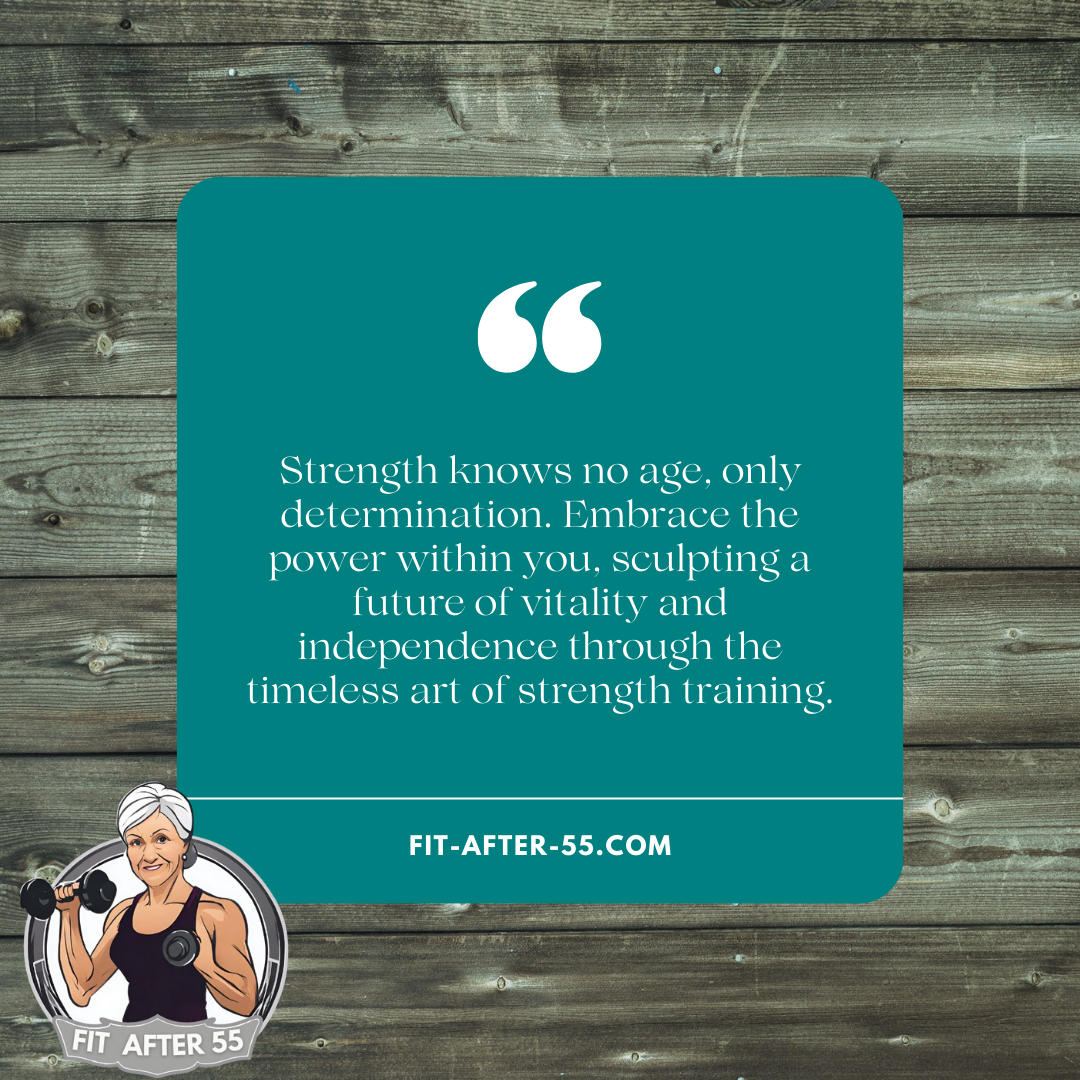
Core Strengthening Exercises for Stability
Engaging in core strengthening exercises is key to improving your stability as you age. These targeted movements fortify the muscles around your midsection, enhancing balance and reducing the risk of falls.
Planks are fundamental for engaging your and shoulders. Begin in a push-up position and hold your body as straight as a board. The goal is to sustain this position for as long as possible, building endurance in your core muscles.
For something less intense, try the Bridge. Lie on your back with knees bent and feet flat on the ground. Raise your hips to create a straight line from your knees to your shoulders. This exercise strengthens the lower back and gluteal muscles.
Incorporate the Opposite Arm and Leg Raise to challenge your coordination. From a hands and knees position, simultaneously extend one arm and the opposite leg, holding for a few seconds before switching sides.
Another great option is the Dead Bug exercise. Lie on your back with knees bent in the air and arms extended upwards. Slowly extend and lower one leg to just above the floor while bringing down the opposite arm behind you—alternate sides to maintain balance and control.
| Exercise | Focus | Position |
|---|---|---|
| Planks | Abdominals, Arms, Shoulders | Face-down |
| Bridge | Lower Back, Gluteal Muscles | Face-up |
| Opposite Arm and Leg Raise | Coordination, Core | Hands and Knees |
| Dead Bug | Core Control, Stability | Face-up |
Ensure you keep your movements slow and controlled. Breathe evenly throughout your exercises to maximize effectiveness and prevent any strain. With time, these exercises will significantly enhance your core stability.
Upper Body Exercises
Strengthening the upper body is crucial for maintaining your independence in performingindependence i daily activities. These exercises can enhance your upper body strength, improve your posture, and increase your range of motion.
Shoulder Strengthening
For shoulder strengthening, incorporate exercises like the seated dumbbell press. Start by sitting upright with a dumbbell in each hand. Press the weights upward above your shoulder and slowly lower them back down. Aim for two sets of ten repetitions. Consistent shoulder exercises can help maintain Please make sureBack-strengtheningkeepingjoint mobility and support everyday tasks like lifting objects.
Arm and Chest Exercises
Your arms and chest are fundamental for pushing movements and tasks requiring upper body force. Begin with arm exercises such as bicep curls and tricep extensions to strengthen the muscles in your arms. For your chest, modified push-ups against a wall or countertop can be effective. Ensure your form is correct: your elbows should move backward, not out, as you lower your body.
Back Strengthening Movements
Back strengthening movements support a healthy posture and reduce back pain. Include exercises like the bent-over row: holding a pair of light weights, hinge forward at the hips, keep your back straight, and row the weights to your sides, squeezing your shoulder blades together. Begin with ten repetitions, keeping the movements controlled and your core engaged to protect your spine.
Lower Body Exercises
Incorporating specific lower body exercises into your routine can enhance strength and stability, which is crucial as you age.
Leg Strengthening
- Squats: Stand with your feet shoulder-width apart, bend at the knees as if sitting back into a chair, and raise back up. This fundamental exercise targets your quadriceps, hamstrings, and calves. Perform 10-15 reps for optimal leg strengthening. For more guidance, check out 12 Leg Exercises for Seniors By Decade.
- Lunges: Take a step forward and lower your h until both knees are at 90 degrees, then push back up. Aim for 8-12 lunges on each leg to work the major muscles of your lower body.
Hip and Glute Workouts
- Hip Bridges: Lie on your back with your knees bent and feet flat on the floor. Lift your hips toward the ceiling, hold for a second, and lower them back down. This targets your glutes and helps improve hip mobility. Complete 10-15 reps per set.
- Side Leg Raises: Keep your legs straight and lift the top leg up and down, engaging the outer thighs and glutes while lying on your sideplease take a look atcontributing. Perform 10-15 reps on each side for balanced hip and glute development.
Balance and Flexibility Training
When focusing on strength training for older adults, incorporating balance and flexibility exercises is crucial. These exercises not only support muscle strength but also improve your range of movement and reduce the risk of falls.
Begin your routine with balance exercises which are foundational for maintaining and improving stability. Simple moves, such as standing on one foot or walking heel to toe, are effective starters. For structured guidance, consider the Balance Exercises for Seniors from Healthline.
In addition to balance-enhancing moves, you should also engage in exercises that enhance your flexibility. Engaging in stretching activities can help maintain your body’s flexibility, which contributes to better balance.
Here’s an essential flexibility exercise to try:
- Toe Touches: Reach slowly toward your toes while keeping your legs straight. Hold the stretch for 15–30 seconds.
For a routine tailored to various ages and capabilities, look to Strength-Training Exercises by Livestrong, which emphasizes stretches suitable for your 50s, 60s, and beyond.
Remember to perform these exercises in a slow and controlled manner to prevent overextension or injury. Regular balance and flexibility exercises can significantly enhance your well-being and ensure a more active lifestyle.
You can always prioritize your safety by using a sturdy chair or counter for support when trying balance exercises. If you have any health conditions or mobility limitations, consult a healthcare provider before beginning any new exercise routine.
Resistance Training with Equipment
When looking to build strength, resistance training with equipment can offer you targeted and adjustable options to enhance your workout routine effectively.
Free Weights
Free weights, such as dumbbells and barbells, are classic tools for resistance training that you can use to perform tension levels, makingpull-parts for your shoulders and chest exervariouscises targeting all major muscle groups. For your upper body, exercises like bicep curls and tricep extensions are beneficial, while squats and deadlifts can effectively work your lower body.
Resistance Bands
Resistance bands are versatile, portable pieces of equipment that can add resistance to your workouts and help improve your strength and flexibility. They come in different levels of tension, which makes them suitable for a gradual progression in your training. Examples of exercises include band pull-aparts for your shoulders and chest, and leg press movements while seated.
Machines and Other Equipment
Gym machines, such as the leg press, chest press, and lat pull-down, are specifically designed to target individual muscle groups with controlled movements, which can be safer for joints.making joints safercritical Other equipment includes cable systems that offer a wide range of motion and exercise options. On these machines, you can perform exercises like cable rows to strengthen your back and core stability exercises like cable twists.
Selecting appropriate equipment and exercises according to your fitness level is key to an effective resistance training program.
Bodyweight Exercises for Older Adults
As you age, maintaining strength and functionality is crucial for independence. Bodyweight exercises are ideal for older adults because they can be done anywhere, require no equipment, and can be modified to suit your fitness level. Here’s a simple guide to a few practicalifting your chest bodyweight exercises:
- Squats: Stand with feet hip-width apart, and perform a basic squat to strengthen your thighs, hips, and buttocks. Focus on keeping your chest lifted and sending your hips back as if sitting in a chair.
- Wall Push-Ups: Face a wall, place your hands on it at shoulder height, and perform push-ups. This variation is gentler on the joints while stil, lift your top leg, and strengthening the chest, shoulders, and arms.
- Leg Lifts: Lie on one sid switch sides. This exercise targets the outer thighs and hip abductors.
- Toe Stands: Rise onto the balls of your feet while standing or holding on to a chair for balance, to strengthen your calves and improve balance.
- Seated Knee Lifts: Sit in a sturdy chair, keep your back straight, and lift your knees one at a time to strengthen your hip flexors and thighs.
Remember to keep your movements slow and controlled. It’s essential to listen to your body and modify these exercises as needed. Begin with a small number of repetitions, and you can gradually increase the count as you get stronger.
| Exercise | Target Areas | Tips for Safety |
|---|---|---|
| Squats | Thighs, hips, buttocks | Keep knees behind toes; don’t let them cave inward. |
| Wall Push-Ups | Chest, shoulders, arms | Maintain a straight line from head to heels. |
| Leg Lifts | Outer thighs, hip abductors | Avoid jerky movements; keep it smooth. |
| Toe Stands | Calves, improves balance | Use a chair for support if needed. |
| Seated Knee Lifts | Hip flexors, thighs | Keep your back straight against the chair. |
By incorporating these exercises into your routine, you can help maintain your functional strength and mobility.
Maintaining Motivation and Consistency
When you’re engaging in strength training, maintaining your motivation and consistency is key. Here are some straightforward strategies to keep you on track:
- Set Clear Goals: Begin by setting achievable goals that are measurable and specific. For example, aim to complete a strength training session twice a week.
- Create a Routine: Structure your days so that exercise becomes a non-negotiable part of your schedule. Treat it like any other important appointment.
- Track Progress: Use a journal or an app to record your workouts and progress. Seeing your improvements over time can be a powerful motivator.
- Reward Yourself: Establish small rewards for when you hit certain milestones or stay consistent for a certain period of time, such as a massage or a new book.
- Find a Workout Buddy: Partnering up with a friend can make workouts more enjoyable and increase your accountability.
Remember that every day won’t be perfect, and that’s okay. What’s important is that you are consistent with your efforts over time. Here’s a simple way to visualize your plan:
| Action Step | Description |
|---|---|
| Goal Setting | Define what you want to achieve with your strength training |
| Scheduling | Dedicate regular times for your workouts |
| Progress Tracking | Write down your exercises, sets, reps, and improvements |
| Rewards | Decide on incentives for reaching milestones |
| Social Support | Team up with friends or family for encouragement |
By incorporating these strategies, you’ll be better equipped to stick with your strength-training routine and reap the benefits over time.
Strength Training Older Adults: Embracing Fitness for Vitality
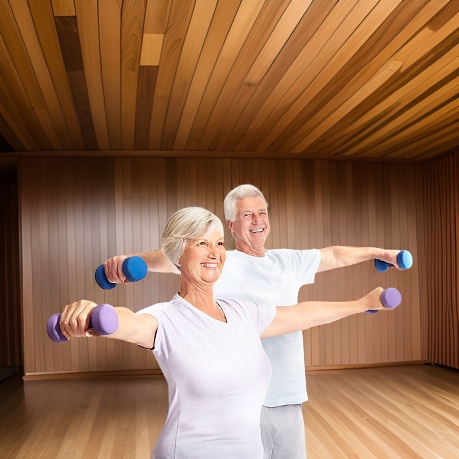
In summary, strength training presents a vital opportunity for seniors to safeguard their health and well-being. Through targeted exercises focusing on core stability, upper and lower body strength, and flexibility, older adults can improve mobility, reduce the risk of falls, and maintain independence. By prioritizing safety, consistency, and motivation, seniors can unlock the transformative potential of strength training. Let’s take the first step towards a stronger, more vibrant future together. Start your strength training journey today and embrace a life of vitality and independence.
Frequently Asked Questions
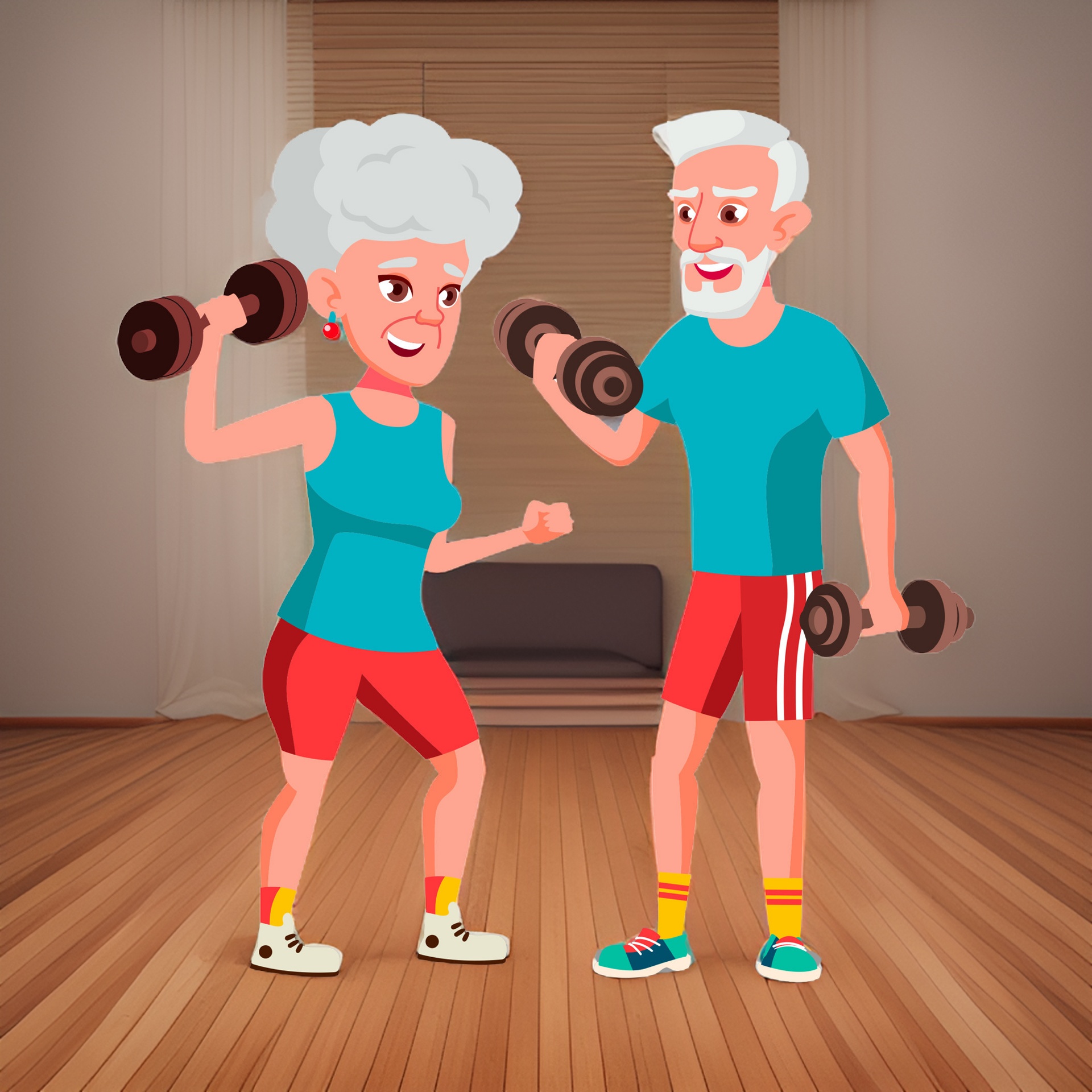
In addressing your strength training needs as a senior adult, key information about exercises, benefits, and guidelines will be discussed, providing clear insights for your fitness journey.
What are some effective strength training workouts suitable for senior women?
Certain strength training exercises for seniors are especially beneficial, including leg presses for lower body strength, bicep curls for upper body toning, and resistance band workouts for flexibility and muscle building.
How can resistance training benefit older adults and enhance their health?
Resistance training can be instrumental in increasing muscle mass, improving bone density, and boosting metabolism, which together contribute to better overall health and reduced risk of chronic diseases for older adults.
What full-body weight workouts are recommended for seniors to increase strength?
Full-body weight workouts for seniors that are effective include squats, deadlifts with light weights, and seated rowing exercises, designed to reinforce major muscle groups and enhance functional daily movement.
Can you recommend beginner-friendly strength training exercises for seniors that can be done at home?
For beginners, starting with chair squats, wall push-ups, and step-ups using stairs can be home-friendly exercises that build strength and require minimal or no equipment.
How often should seniors engage in strength and power training for optimal health?
Seniors should aim to incorporate strength and power training into their routines at least twice a week, ensuring a day of rest in between sessions to allow muscles to recover and grow stronger.
What are the CDC's guidelines for strength training frequency and intensity for adults over 65?
According to the CDC’s guidelines for older adults, seniors should strive for moderate-intensity strength training exercises that work all major muscle groups on two or more days a week, being mindful not to exercise the same muscle group on consecutive days.
Discover Strength & Vitality at Fit After 55!
Unlock a wealth of knowledge on elderly strengthening and fitness at Fit After 55. Explore tailored exercises, safety tips, and motivation to thrive in your golden years. Visit now for a stronger, healthier you!

